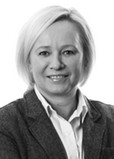Bone mineral status of young cyclists
Фотографии:
ˑ:
Barbara Długołęcka
Józef Piłsudski University of Physical Education in Warsaw, Faculty of Physical Education and Health in Biala Podlaska, Poland
The majority of studies point to the fact that sport exerts an extremely beneficial influence on bone tissue. Compared to adults with a sedentary lifestyle, sportspeople almost always display greater bone mass (sometimes even by 20-30%).Taking these facts into consideration, the impact of the type of loads on bone mineralisation seems to be the issue that needs further research. It is thought that not every type of physical activity affects BMD in the same manner. Based on the above considerations, it may be presumed that, compared to untrained population, athletes who do certain sports may constitute a group with increased osteoporosis risk.
Objective of the present study was to assess bone mineral content and bone mineral density in men practicing road cycling at peak bone mass in comparison with men at the same age not practicing sport.
Methods and structure of the study. Road cyclists, representatives of youth cycling clubs (n=30) aged 21-22 and men of similar age who do not practice sports (n=45) took part in the research. bone mineral content (g) and bone mineral density (g/cm2) in the lumbar spine (L2-L4) were determined with the use of the DEXA method.
Results and discussion. The analysis of the results showed that the mean values of the determined bone parameters did not differentiate the studied groups. However, tendencies to higher values in the control group were observed. Excessive phosphorus intake was observed in both groups. On the basis of the results obtained it can be concluded that the examined cyclists do not constitute a group of increased risk of developing osteopenia in comparison with men who do not train.
Keywords: road cyclists, bone mineralisation and density, physical activity, diet.
References
- Długołęcka B., Jówko E., Czeczelewski J., Cieśliński I., Klusiewicz A. Bone mineral status of young men with different levels of physical activity. Pol.J.Sport Tourism.2019. 26(1). pp. 8-13.
- Hinrichs T., ChaeE., Lehmann R., Allolio B., Platen P. Bone mineral density in athletes of different disciplines: a cross-sectional study. Open Sports Sci J. 2010. 3.pp.129-133.
- JaroszM. Nutrition standards for the Polish population. Food and Nutrition Institute in Warsaw 2017.
- Lee J.H. The effect of long-distance running on bone strength and bone biochemical markers. J ExercRehabil.2019.15(1).pp. 26-30.
- Liberato S.C., Bressan, J., Hills A.P. The role of physical activity and diet on bone mineral indices in young men: a cross-sectional study. J IntSoc Sports Nutr.2013.10.pp.43.
- McVeighJ.A., Howie E.K., Zhu K., Walsh J.P., Straker L. Organized Sport Participation From Childhood to Adolescence Is Associated With Bone Mass in Young Adults From the Raine Study. J Bone Miner Res. 2019.34 (1).pp.67-74.
- Rapún-López M., OlmedillasH., Gonzalez-Agüero A., Gomez-CabelloA., Pradas de la Fuente F., Moreno L.A., Casajús J.A., Vicente-Rodríguez G. May Young Elite Cyclists Have Less Efficient Bone Metabolism? Nutrients. 2019.doi: 10.3390/nu11051178.
- Verroken C., Zmierczak H.G., Goemaere S., Kaufman J.M., Lapauw B. Bone Turnover in Young Adult Men: Cross-Sectional Determinants and Associations With Prospectively Assessed Bone Loss. J Bone Miner Res. 2018.33(2).pp.261-268.
- Vorland C.J., Stremke E.R., Moorthi R.N., Hill Gallant K.M. Effects of Excessive Dietary Phosphorus Intake on Bone Health. Curr Osteoporos Rep. 2017.15(5).pp. 473-482.



 Журнал "THEORY AND PRACTICE
Журнал "THEORY AND PRACTICE